Hanok Stay Joadang [Korea Quality] 한옥스테이 조아당[한국관광 품질인증]
2.3Km 2025-03-19
11, Wonhyo-ro 213beon-gil, Gyeongju-si, Gyeongsangbuk-do
Festival de la Cultura de Silla (신라문화제)
2.4Km 2024-11-26
Nodong-dong 261, Gyeongju-si, Gyeongsangbuk-do
054-777-6782/3/4
Desde 1962, el Festival de la Cultura de Silla ha sido una celebración cultural significativa realizada en el Parque Hwangseong, y el centro de la ciudad de Gyeongju. Es un festival cultural que convoca al espíritu del antiguo reino de Silla, que supo tener una destacada historia y cultura. También presenta la visión de Gyeongju de ser un espacio de intercambio cultural y turismo. El festival les permite a los residentes y turistas unirse bajo un ambiente de interacción positiva, expandiendo asimismo la imagen de Gyeongju como sitio histórico y destino turístico cultural con una herencia milenaria.
Hwangnam Bread (황남빵)
2.4Km 2025-03-19
783, Taejong-ro, Gyeongju-si, Gyeongsangbuk-do
Tumba Geumgwanchong (금관총)
2.4Km 2021-05-18
Noseo-dong, Gyeongju-si, Gyeongsangbuk-do
Geumgwanchong se ubica en Noseo-dong, Gwangju, y es una tumba de la dinastía de Silla (a.C 57 a d.C 935). Es una de las tres tumbas del centro de Gwangju que pertenece al distrito de Noseo-dong. No se conoce con certeza, pero se cree que la tumba Geumgwanchon pertenece al cuerpo de un rey anterior o posterior al rey Ji-Jeung a principios del siglo VI. Fue descubierta en septiembre de 1921 cuando el se estaban allanando las tierras para expandir la superficie. La primera reliquia que se encontró en esta tumba es una corona de oro (que en coreano se dice “geumgwan”), que le dio su nombre. También se econtraron en esta tumba ornamentos como cintos de oro, aros, pulseras, accesorios y vajilla de la época de los Tres Reinos (cuando Goguryeo, Baekje, y Silla se separaron para luego unificarse en Silla en 676 d.C). Se encontraron numerosas reliquias, más de 30.000 solo contando los accesorios. La estructura original de Geumgwanchong era de 13 metros de alto y 50 metros de diámetro. Las reliquias de esta tumba fueron transferidas y se preservan en el Museo Nacional de Gyeongju.
Nadul Hanok [Korea Quality] / 나들한옥 [한국관광 품질인증]
2.6Km 2020-09-09
4-1, Jjoksaem-gil, Gyeongju-si, Gyeongsangbuk-do
+82-54-777-7738
Nadeul Hanok was opened in 2018 with brand-new facilities, in a location just a minute’s walk from Cheomseongdae Observatory in Gyeongju. You can feel a sense of healing in nature in the traditional style house, built in environment-friendly construction method with wood and earth. The ‘ㄷ’-shaped building creates a snug atmosphere and the hipped-and-gable roof and the curves of the roof tile show the traditional quiet and still flavor of a traditional Korean house. There are 7 rooms in Nadeul Hanok. Among them, the Garam, Gayeon, and Nuri Rooms are offered at 50,000 won for 2 persons during off-season so that visitors can enjoy staying in a traditional Korean house at more affordable prices. All rooms are equipped with a bathroom for better convenience and there is an individual thermostat all year round. Complimentary breakfast made of healthy convenience food is offered to all guests. The menu is composed of barley bread, fruit, coffee, juice, boiled egg, and biscuit, and is subject to change according to situation. What is good is that the breakfast can be delivered to the room if the delivery time is requested during breakfast time, which is from 8 to 9 AM.
It is possible to look around the tourist attractions near Nadeul Hanok on foot. In addition, there are CVs, fast food shops, bike rental shops, and hanbok rental shops adjacent to Nadeul Hanok, enabling a more convenient and joyful tour.
Gyeongju Soohojeong [Korea Quality] / 경주수호정 [한국관광 품질인증]
2.6Km 2020-09-08
15-15, Poseok-ro 1068beon-gil, Gyeongju-si, Gyeongsangbuk-do
+82-10-2379-7248
Gyeongju Suhojeong, located in front of the Gyeongju Daereungwon, is a Hanok guesthouse in a ㄱ shape. The traditional house was built in 2015 in accordance with traditional architecture using natural materials such as pine tree, red clay, straw, and others; thus, it is cool in summer and warm in winter. Planted along the wall next to the door are Korean hornbeams, top trees, maple trees, and elm trees. The climbing roses on the wall bloom in May and offer a great sight. The spacious yard with a stone table is a great place to chat with fellow guests. There are seven rooms in total and a cafeteria which doubles as a lounge. Each room with a bathroom has modern facilities that suit traditional beauty. Gyeongju Station and Gyeongju Intercity Bus Terminal are only five minutes away on foot, making the trip to the guesthouse by public transport easy. Sitting right next to the Hwangridangil Street, the accommodation offers great access to popular restaurants and fashion places of Gyeongju, and to major tourist attractions such as Daereungwon, Cheomseongdae, Balwolseong, Anjapji, and Gyochon Village.
SILLA BOUTIQUE HOTEL PREMIUM [Korea Quality] / 신라부티크호텔 [한국관광 품질인증]
2.6Km 2025-01-02
200, Gangbyeon-ro, Gyeongju-si, Gyeongsangbuk-do
+82-54-745-3500, +82-54-624-3366
Silla Boutique Premium Hotel is a family-friendly hotel with children's facilities. The Premium Kids Deluxe and Premium Kids Suite Rooms are furnished with a low bed for the safety of children. The hotel has a total of 31 rooms with white and wood-toned interior. There are various room sizes such as Premium Double Bed Room for two and Premium Corner Suite Room for six. Hotel guests can bathe and use the sauna facilities in the spa SpaLux in the hotel building for free and buy everyday necessities from the 24-hour convenience store on the first floor. It’s a mere 5-minute walk from the Bus Terminal and only a 20-minute bus ride from Singyeongju Station. Most of the popular tourist destinations in Gyeongju City are within a 20-minute bicycle ride from the hotel as well.
Gyeongju Ssambap Street (경주 쌈밥거리)
2.6Km 2025-03-19
9 Gyerim-ro, Gyeongju-si, Gyeongsangbuk-do
Alrededores del Parque Daereungwon de Gyeongju (경주 대릉원 일원)
2.6Km 2025-04-25
Hyerim-ro 9, Gyeongju-si, Gyeongsangbuk-do
Los Alrededores del Parque Daereungwon de Gyeongju consta de cinco tumbas: las de Nodong-ri, Noseo-ri, Hwangnam-ri, Hwango-ri e Inwang-ri. Las tumbas se distribuyen en el barrio de Hwangnam-dong de la ciudad de Gyeongju y se ubican en las inmediaciones de Daereungwon. Dentro de Daereungwon se encuentra la Tumba Cheonmachong, excavada en 1973. Otra tumba a destacar es Hwangnamdaechong, excavada entre 1973 y 1975, las cuales son tumbas gemelas.
Áreas Históricas de Gyeongju (경주역사유적지구) [Patrimonio Cultural de la Humanidad de la Unesco]
2.7Km 2025-03-17
Taejong-ro 757, Gyeongju-si, Gyeongsangbuk-do.
Designado como Patrimonio Cultural de la Humanidad por la Unesco en noviembre del 2000, es una zona histórica que conserva toda la historia y cultura de Gyeongju, la antigua capital de Silla (57-935). Se clasifican en un total de 5 áreas históricas. La primera es la zona de Namsan, la cuna del arte budista de Silla. Considerado un museo al aire libre sin paredes, es un lugar en donde persiste el espíritu de Silla, y reúne 37 reliquias budistas; el pabellón Poseokjeong (Sitio Histórico), la roca Tapgok Maaejosanggun (Tesoro – figuras budistas grabadas en roca), la pagoda de tres pisos de piedra del templo Cheonryongsa (Tesoro), la roca Chilburam Maaeseokbul (Tesoro - figuras budistas grabadas en roca), la roca Bulgok Seokbuljwasang (Tesoro), etc. La segunda es la zona de Wolseong, sitio en donde estaban los palacios de la dinastía milenaria de Silla. Se encuentran en esta área el bosque Gyerim (Sitio Histórico), el sitio de la sala Imhaejeon, y el mejor observatorio de Asia, Cheomseongdae (Tesoro Nacional). La tercera es la zona de Daereungwon, el complejo de tumbas reales, los pertenecientes a los reyes, reinas y miembros de la nobleza. Durante su proceso de excavación se han encontrado coronas, pinturas de caballos míticos, variedad de cerámica, etc., entre otras reliquias que han servido como base de estudio histórico. La cuarta es la zona en donde se encontraba instalado el famoso templo Hwangnyongsa (Sitio Histórico). Y por último, la quinta zona, es el lugar en donde se establecía la fortaleza Myeonghwalsanseong (Sitio Histórico), que se presume que fue construido hace 400 años. Estas áreas históricas de Gyeongju, designadas como Patrimonio Cultural de la Humanidad por la Unesco, comprenden un total de 52 patrimonios culturales.
![Hanok Stay Joadang [Korea Quality] 한옥스테이 조아당[한국관광 품질인증]](http://tong.visitkorea.or.kr/cms/resource/08/3009408_image2_1.jpg)
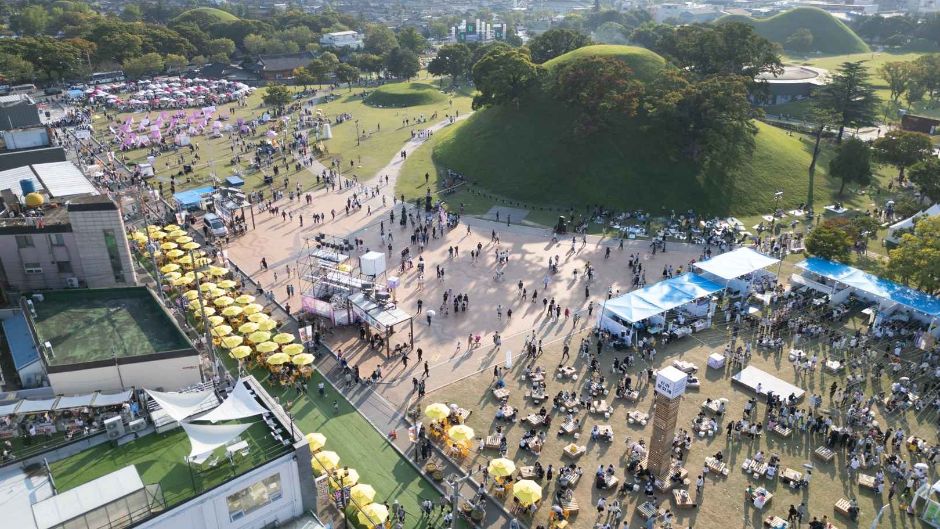
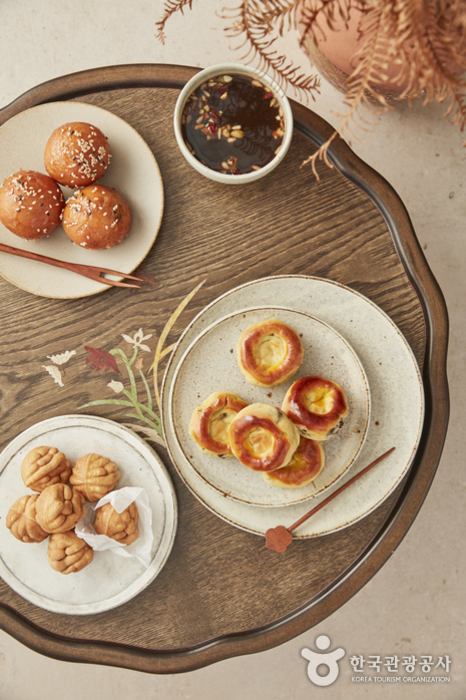
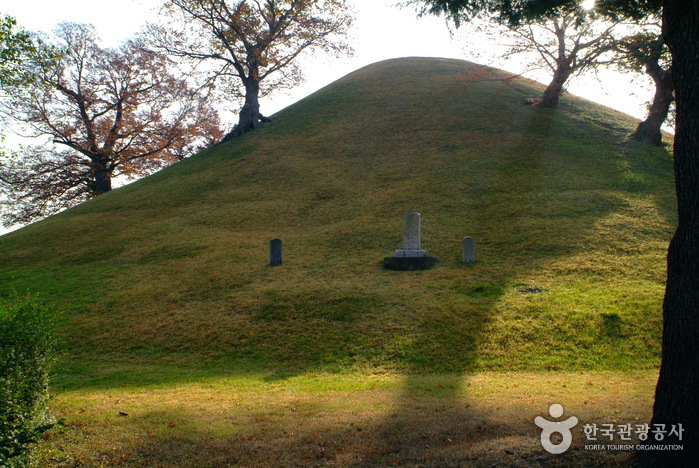
![Nadul Hanok [Korea Quality] / 나들한옥 [한국관광 품질인증]](http://tong.visitkorea.or.kr/cms/resource/86/2636486_image2_1.jpg)
![Gyeongju Soohojeong [Korea Quality] / 경주수호정 [한국관광 품질인증]](http://tong.visitkorea.or.kr/cms/resource/11/2635611_image2_1.jpg)
![SILLA BOUTIQUE HOTEL PREMIUM [Korea Quality] / 신라부티크호텔 [한국관광 품질인증]](http://tong.visitkorea.or.kr/cms/resource/53/2559353_image2_1.jpg)
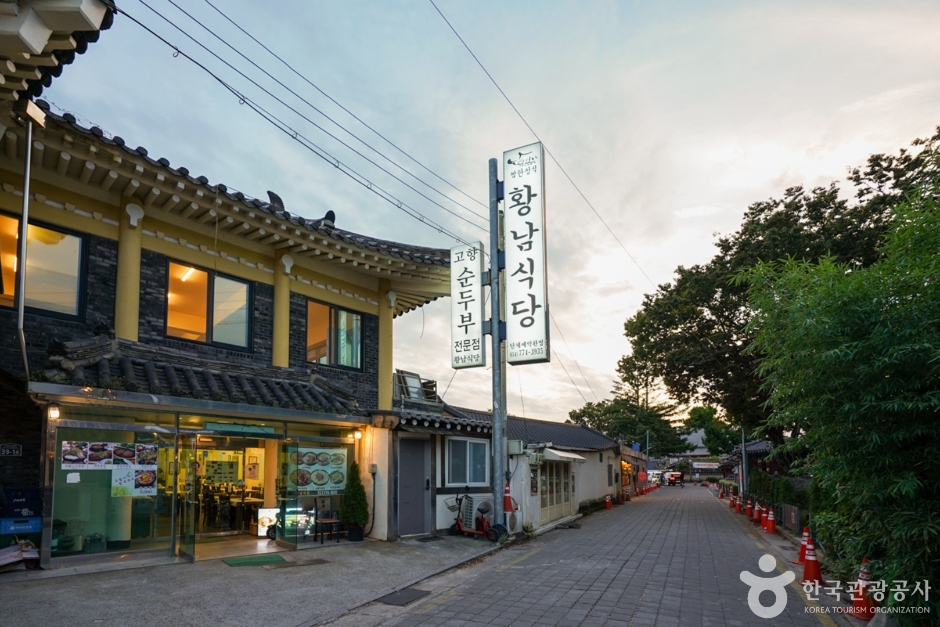
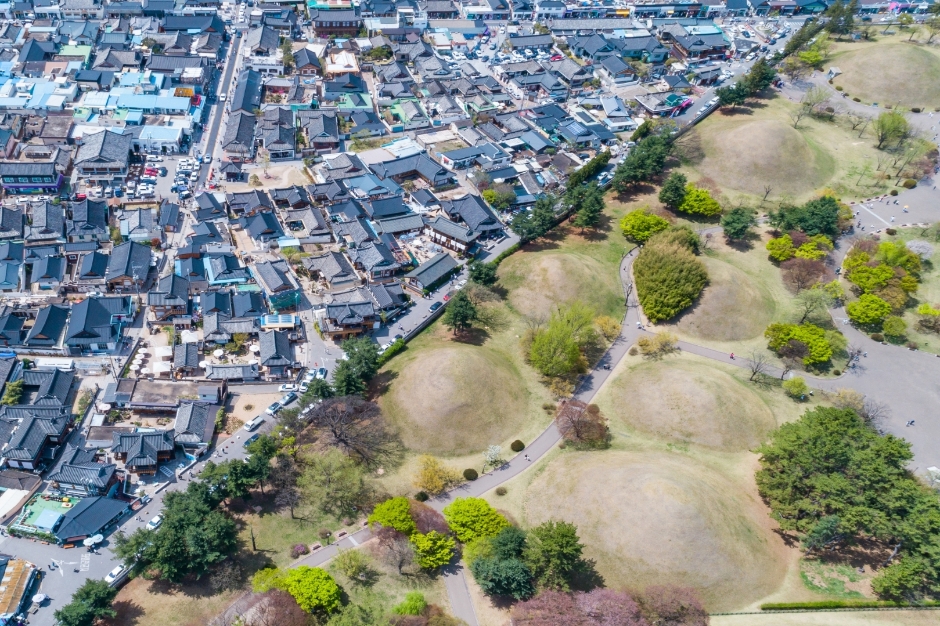
![Áreas Históricas de Gyeongju (경주역사유적지구) [Patrimonio Cultural de la Humanidad de la Unesco]](http://tong.visitkorea.or.kr/cms/resource/03/2656603_image2_1.jpg)
 Español
Español
 한국어
한국어 English
English 日本語
日本語 中文(简体)
中文(简体) Deutsch
Deutsch Français
Français Русский
Русский